#Hay Petrie
Explore tagged Tumblr posts
Text


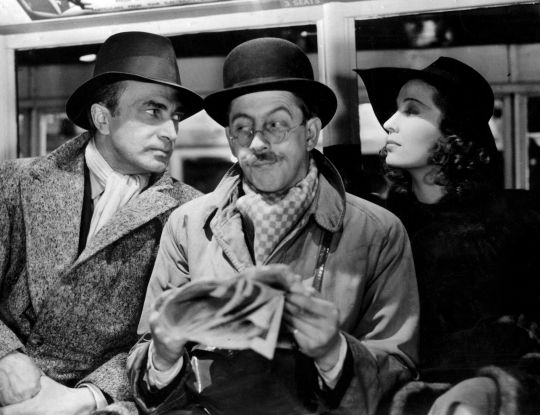
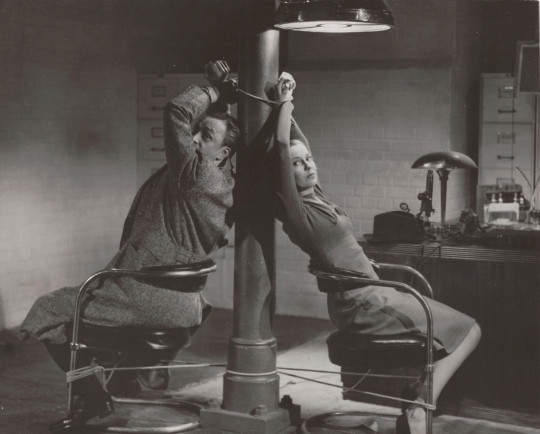


Contraband (Blackout) (1940) Michael Powell
June 1st 2024
#contraband#blackout#1940#michael powell#conrad veidt#valerie hobson#hay petrie#phoebe kershaw#raymond lovell#esmond knight#esma cannon#emeric pressburger
4 notes
·
View notes
Photo
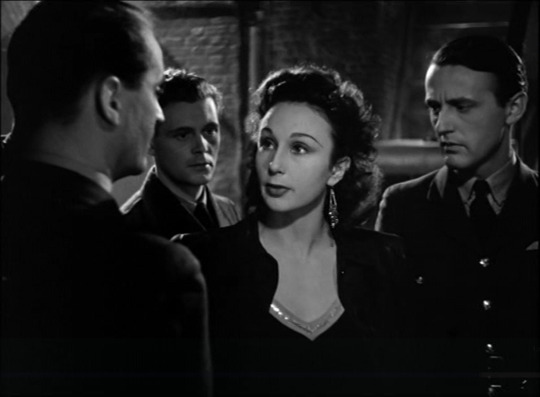



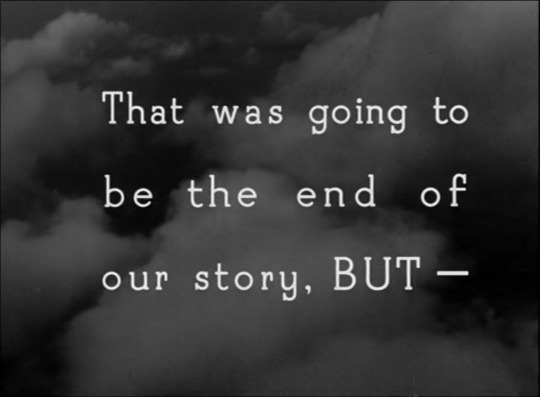
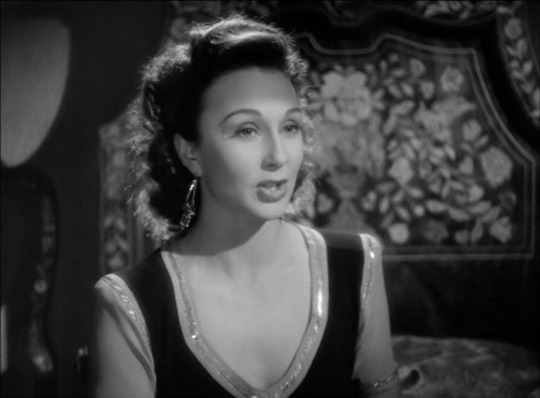

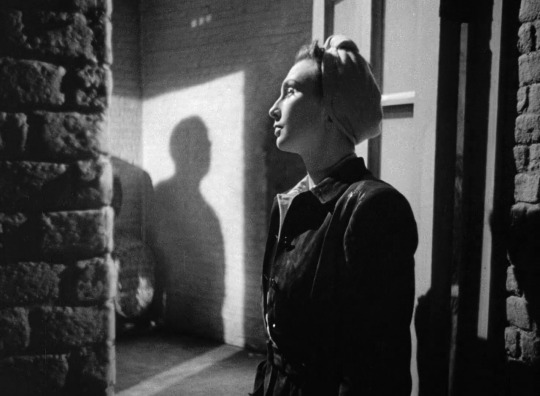
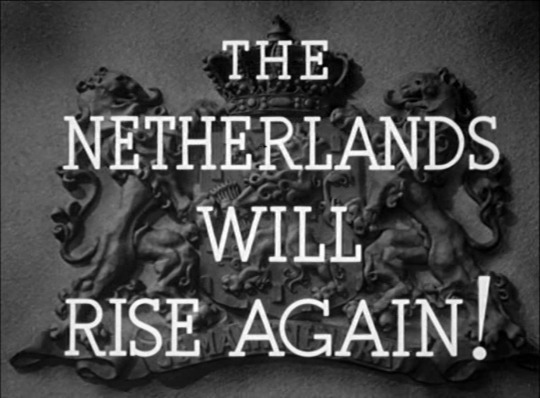
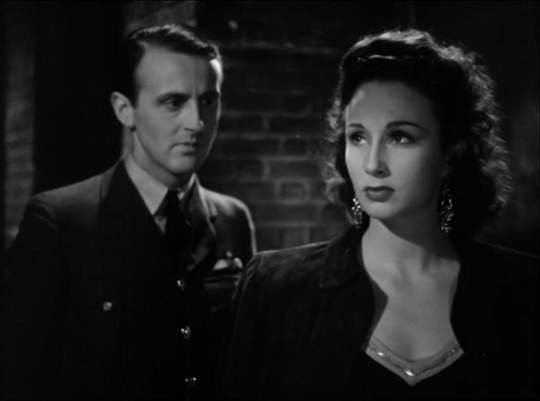
One of Our Aircraft Is Missing is a 1942 British war film, mainly set in the German-occupied Netherlands. It was the fourth collaboration between the British writer-director-producer team of Michael Powell and Emeric Pressburger.
On its way back from a raid on the city of Stuttgart, a British bomber is shot down over Nazi-held Holland. Parachuting into Dutch farmlands under cover of darkness, the six-member crew connects with members of the local resistance, who shelter the Brits from their Nazi inquisitors as they make their way towards freedom.
The film stars Eric Portman, Bernard Miles, Googie Withers, Pamela Brown, Peter Ustinov (in his film debut), Alec Clunes, Hay Petrie, Robert Helpmann, Hugh Williams and Godfrey Tearle.
#eric portman#bernard miles#googie withers#one of our aircraft is missing#1940s#godfrey tearle#hugh williams#robert helpmann#hay petrie#alec clunes#peter ustinov#pamela brown#powell and pressburger#michael powell#old britain#emeric pressburger#holland#the netherlands#ww2#second world war#world war two
1 note
·
View note
Text
Cinquina Strega 2023
Cinquina Strega 2023 Rosella Postorino – Mi limitavo ad amare te (Feltrinelli) – 217 voti Ada d’Adamo – Come d’aria (Elliot edizioni) – 199 voti Maria Grazia Calandrone – Dove mi hai portata (Einaudi) – 183 voti Andrea Canobbio – La traversata notturna (La nave di Teseo) – 175 voti Romana Petri – Rubare la notte (Mondadori) – 167 voti
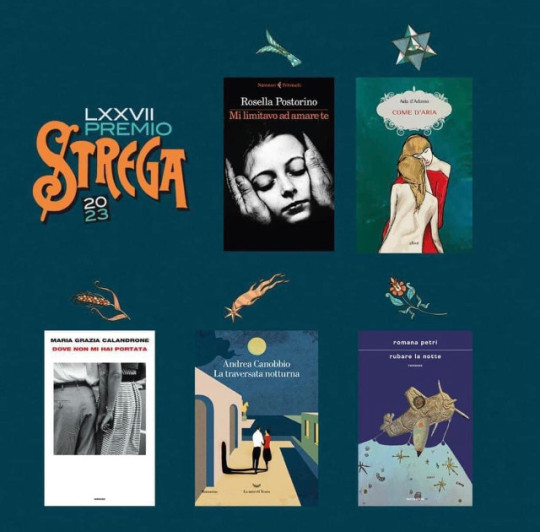
View On WordPress
#Ada d&039;Adam#Andrea Canobbio#Cinquina Strega 2023#Come d&039;aria#Dove mi hai portata#Einaudi#Elliot edizioni#Feltrinelli#La nave di Teseo#La traversata notturna#Maria Grazia Calandrone#Mi limitavo ad amare te#Mondadori#Romana Petri#Rosella Postorino#Rubare la notte
1 note
·
View note
Text




han visto el video ese de un gatito alimentándose de la cola de un caimán? es sórdido pero porque hay un humano poniendo pedacitos de la cola del animal muerto en una bandeja de Petri.
68 notes
·
View notes
Text

Contraband (Blackout) Dir. Michael Powell 1940
This one has been on my rewatch list since I first saw it last year. It was one of the few films in the epic Connie watch-a-thon that felt like it had some kind of curative powers, in the surprising way some movies do. I never expected it to lift my spirits and lighten my heart the way it did.
10/10 no notes. I absolutely love everything about this movie. Except the randomly shoehorned "White Negro" scene. It's so out of place in an otherwise pretty progressive film. That cabaret act literally could have been anything, why choose that?? (I couldn't find a lot of info about the choreographer, but it sounds like he was into romanticizing and exoticizing African and Caribbean people in his work… which is not great, but pretty typical of that time I guess. Ugh.)
But otherwise delightful, a romp from start to finish. Apparently someone on IMDB slammed Contraband for being "camp expressionism", but honestly? Hell yeah. I'm 100% here for it. In fact, "camp expressionism" my new favorite genre if it means cute, quirky, risqué, well-directed, well-shot, romantic spy comedy with a tight script and excellent performances.
I've also seen people comparing it to American screwball comedies of the era, but that doesn't seem quite right or even fair. Contraband, thanks to Powell, Pressburger, the editor, and the cast, has a very light touch compared to the comedies coming out of Hollywood in the '30s and '40s. It's not as heavy-handed, it doesn't beat its message to death with over-done gags or affected performances. Michael Powell even said the movie was "all pure corn, but corn served up by professionals." And that's the Powell and Pressburger difference, baby.
The comedy in the script is executed with relative subtlety. The movie isn't telling you HERE’S THE FUNNY BIT, LAUGH NOW the way screwball, slapstick Hollywood would. You almost have to be looking for the humor here to catch it, and it pays off. It's a cheekier type of comedy, not really driven by jokes and punchlines. And as someone who never really liked American comedies of that era, I really appreciate this kind of film. It's silly, even outright stupid in some scenes, but it's not playing down to it's audience. I mean, the whole brawl in the night club is almost like the big fight at the end of Blazing Saddles where more and more people keep joining in, but the action stops for half a second while someone delivers a line. It's stupid. And I love it.
The espionage stuff in is a little convoluted and kind of treated as a throw-away. But really, if you're not paying super close attention to that part of the story, you're not missing much. The spy plot between the British and the Nazis is really just there to give the lead characters something fun to do, and you know what… that's ok with me.
The cinematography also helps elevate Contraband above just being a regular old comedy. Featuring the London blackout is actually really clever. It forces a number of scenes into almost total darkness, which was a risky move and could have been a huge mistake, but it adds yet another interesting layer to the film, visually and in terms of story. There's an unusual POV (possibly handheld?) tracking shot, when Andersen and Mrs. Sorensen are walking up to her house in town, that's just lit by their flashlight. We don't see either of them, except for her hand briefly putting the key in the lock, until after they enter and the camera pans around the hall. And there's a moment a while later when they're in the basement after being tied up where Connie's face is entirely in shadow -- we know he's looking at her, but his expression is completely hidden in darkness. On paper, it sounds like a bad shot, a mistake, but this "expressionistic" lighting and camera work adds a little extra special sauce that I for one greatly appreciate.
The supporting cast is all generally pretty good. Hay Petrie is fun in a double roll. There's the scene in the rowboat where he looks like he's going to get sea sick… despite being the first mate who practically lives on a ship. Little character touches like that throughout the movie make it delightful: The girl in short shorts doing exercises in her room when Connie bursts in on her, the line delivery of the woman who works in the kitchen with Uncle Erik, the guy outside lighting his pipe during the blackout letting those two cops HAVE it. I love a character actor driven movie, all these people in bit parts adding so much color to the story. Brilliant.
Valerie Hobson is so good in this. First of all, she's a boss bitch with an incredible wardrobe. Every look she's serving is iconic. The tweed jacket and headscarf that matches her blouse? The dress with the crazy angular shoulder pads? The big, wide-brimmed hat? Slay. She's authoritative without being shrill, she's got a confident swagger you don't see a lot of actresses getting to showcase at that time. Still, she's not really a femme fatale either. Mrs. Sorensen is independent, intelligent, stunning, and into dangerous spy shit because she enjoys it. She's someone I'd want to hang out with, but would be too scared to talk to because she's so cool. I mean, she almost missed the train at the end because she went back to get Andersen's watch! I have two words for you: Wife Goals.
Sadly, it sounds like Val didn't really get to do a lot of other fun roles outside of the two films she made with Connie. Which is a real shame. Someone on Letterboxd said they're better together than Tracy and Hepburn, and I fully agree. Val and Connie have a natural chemistry that neither feels feel too personal or too studied. Their on screen work together feels easy, without all the baggage and volatility of IRL romance.
The first time I saw Contraband, I think I was simply charmed by Connie as Andersen. Getting to see him as a fun, heroic, romantic lead is incredibly satisfying. But this time around I realized how funny he actually is. He's is so cranky, he starts the movie already at like an 8.5, he's so fucking over it. It's one thing after another -- Mrs. Sorensen won't wear her life jacket, British contraband control wants to hold up them up, someone stole the landing papers, and of course it was Mrs. Sorensen AND Mr. Pigeon. He's so grumpy from the get. (My theory is that he's hangry. He's temperamental and irritable up until he gets a decent meal at The Three Vikings. So relatable.)
It was fun to rewatch this one to catch all the comedic beats Connie is doing with his gestures and facial expressions. They're choreographed, but not affected or over done. His timing and delivery is subtle and finely tuned, which is always funnier than an actor who deliberately plays up the laughs. For example, the long pause after Mrs. Sorensen corrects his pronunciation of the name of the restaurant, he furrows his brow and looks around and finally mutters, "…VI-kings." His comedy is so understated, which keeps the rapid-fire pacing of the bits from being obnoxious.
Andersen is an interesting guy, too. I feel like his macho vibe is just a mask he wears as captain of his ship. He's so used to being That Guy, but, based on Connie's performance, I get the impression that deep down Andersen doesn’t really subscribe to all that traditional masculinity. Later in the film it's easy-ish for him to eventually drop the façade, adjust his expectations, becoming more flexible, malleable in his ideas about sex and gender. This of course is because Conrad Veidt was in reality a proto-feminist wife guy. Andersen isn't played like your standard manly man movie heroes of the time, because that's not who Connie was, that's not an image he wanted to project or support (and I feel one reason why Hollywood couldn't figure out what to do with him in the '40s, but that rant is for another post).
Andersen and Mrs. Sorensen are pretty evenly matched. In fact she has the upper hand and more progressive, dominant role especially once they arrive in London. On his ship, he's the boss, but on shore he's met with one disadvantage after another. Mrs. Sorensen has to be the one to pay for his bus and cab fare, confidently navigating her way through the blackout like a pro. Meanwhile, Andersen is pretty much a bumbling fool, a sidekick to Sorensen's spy adventure. But he's not totally incompetent either (I MEAN IT LOOKS LIKE HE KNOWS WHAT HE'S DOING WITH THOSE ROPES, HE IS A SAILOR AFTER ALL *eyes emoji* *sweating emoji*), he's the one who comes up with the plan to rescue Sorensen from her Nazi captors (although I get the impression she probably would have found her own way out without his help). But what's great is that he doesn't do it alone, he goes back to The Three Vikings to round up a small army of Danish essential workers to back him up. And I love how Connie plays the whole last act of the film like he's actually on an adventure; you can see Connie the actor having the most fun ever getting to be the big movie star hero, tussling with cops and Nazis, solving puzzles with glee, getting the girl -- who is just as much of a badass as he is -- in the end. It's so good. And it's so much fun to watch.
There are so, so many wonderful little touches in this movie, many of which I only caught during this second watch. I have a page of scribbled notes I wrote while I was watching that ends with, "The cutest shit I have ever seen!" From the performances to the writing to the technical details, it's hard not to fall in love with this one. Contraband is easily one of those films I could rewatch over and over again and never get sick of it.
OH I can't believe forgot about The Boys:
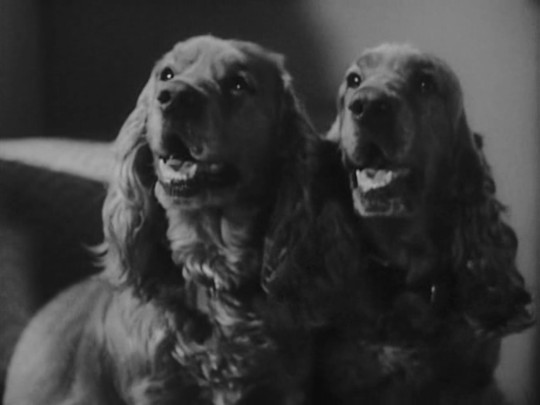
The goodest boys.
#my writing#conrad veidt#contraband#cured my depression cleared my skin watered my crops#despite being one of those movies almost entirely buried in obscurity
9 notes
·
View notes
Note
hai hai!! I am following you now because you are a fandom goer who is not weird about fictionkins interacting with your post (I'm deprived of blogs where I don't get deathly terrified of liking a post from them) also your fanart is good and your headcanons are interesting!
as well as that I like interacting with the pjo fandom because it's like I'm studying your opinion of me and the others in a petri dish.
Nah I'm safe, don't worry. And thank you!
8 notes
·
View notes
Note
hai causing havoc in your askbox because its late so none of my irls are awake and im bored teehee
whos your fav animal crossing villager? Mine is either Bonbon or Frita, Bonbon was one of the 3 villagers that you get near the beginning of acnh (shes one of the main things stopping me from resetting my save augh) and frita i got from an amiibo card but before acnh came out my fav from new leaf was Poncho hands down. Not sure why tho tbh i just liked him :>



pictures of poncho, bonbon and frita in case you were curious ^^^
AYEEE HELLOOOO :DD
Mine's probably a hard tie between Spork, Rodney, Savannah, and Hans!!




Spork and Hans were part of the First 3 villagers to move into my island besides the starting Jock and Sisterly (mine were Muffy and Poncho 🙏) and Spork was just- RAHHH he had my heart immediately, I love how goofy and silly he is, made sure he had the nicest plot 🥰 Hans was also an immediate like from me, he was always so friendly and running up to talk to me and visiting my house :D
Savannah moved in a while later, and she was kind of the same as Hans ^-^ I accidentally let her move out (wrong button pressed-) and I literally went to Nookazon and spent like, an entire day trying to get Petri to move out so that I could buy back Savannah and get her to my island hjgfss.
(Side note but Nookazon is so friendly when I use it, love using it to sell stuff I don't need / rare events like shooting star nights ^-^)
Rodney...? I could not tell you a single reason why I like him, he just has the vibes that made me like him, devastated when I found out people hate him 💔💔
#ask box!!#yanderespamton78#Ty for the ask!! I love any chance to gush about Spork#if any of them were to take the top fav spot it would be Spork my boy 🙏🙏🫶🫶#also side note but I got my req for Spork on a Blake Jennings series answered#its like 'what your fav AC villager says about you'#AND THE WAY HE DISSED MY BOY 😭😭#he said 'what the hell is this 🤨🤨'#LIKE IM NOT MAD ABOUT IT BUT THE SPORK SLANDER 💔💔
4 notes
·
View notes
Text
Clon de Peter Parker


What If? (1977) #30 Bill Flanagan (Escritor), Rich Buckler (Dibujante)
— Spider-Man: Algo está terrible, terriblemente mal… Mis recuerdos son perfectos hasta hace tres años… ¡Y luego nada! Pero no hay brumas, ni lagunas. ¡Es como si los tres últimos años no hubieran sucedido! Como si… ¡Como si los hubiera vivido otra persona en mi lugar! ¡El profesor Warren estaba metido en todo esto! Su laboratorio está desierto, pero… ¡Aquí tiene que haber respuestas! ¿Qué es esto? ¡Un compartimiento escondido bajo las escaleras!
— Spider-Man: ¡Eureka! ¡Fotos de Gwen conmigo! ¡Diapositivas y placas de Petri! Cuadernos llenos de información y cálculos. ¡Increíble! Warren estaba trabajando en una teoría de la clonación que superaba con mucho cualquier cosa imaginada por la ciencia convencional. Pensó que podría recrear a la gente no como era al nacer, ¡Sino como era en el momento de su clonación! Jo, ¡El estudiante de ciencias que soy está impresionado! ¡Warren parece haber ideado una forma de dotar a sus clones de madurez instantánea e incluso de duplicar la mente del donante original! Eso significa que sus clones tendrían todos los recuerdos del donante. Los patrones mentales serían, de hecho, un duplicado perfecto. ¡Dios mío, incluso sacó muestras de nosotros en clase! ¡Sí, lo recuerdo! De hecho, es lo último que recuerdo… De hecho… Oh, Dios mío… ¡Yo soy el clon de Peter Parker!
#comics#comic books#comic book panels#marvel comics#superheroes#spider man#peter parker#bill flanagan#rich buckler
2 notes
·
View notes
Note
Ciao! Ne nomineresti un paio di quelli italiani che hai visto? 🌼
sì, certo!
47 morto che parla, carlo ludovico bragaglia casotto, sergio citti indagine su un cittadino al di sopra di ogni sospetto, elio petri la terrazza, ettore scola travolti da un insolito destino nell'azzurro mare d'agosto, lina wertmuller è stata la mano di dio, paolo sorrentino non ci resta che piangere, roberto benigni e massimo troisi mediterraneo, gabriele salvatores napoli milionaria, eduardo de filippo voci nel tempo, franco piavoli
5 notes
·
View notes
Text
friend: oh you smell that. it's called petrichor. the distinct smell of the earth during and after rain. it's good to be alive isn't it (:
me: nice.
my brain: how much money can you make from stealing and reselling petri dishes? scope hai petrichori mein ya nahi?
3 notes
·
View notes
Text
Quiero intentar hacer Bio-Arte, pero probablemente MUERA en el intento.
Hunter Cole, living drawing.
Dibujos en placas de Petri usando bacterias bioluminiscentes.
Joaquín Fargas, Biosferas.
Creación de ecosistemas en esferas.


Hay gente más extrema que va a la modificación genética de animales (Eduardo Kac) insectos (Marta de Menezes) y plantas (George Gessert)
Realmente es una demencia todo este universo, es interesante y a la vez da un poco de cosita.
Igual, todo es mejor que ir por el camino del arte al estilo accionismo Vienés.
Hasta jugar con bacterias.
2 notes
·
View notes
Photo

Bobby Henrey and Ralph Richardson in The Fallen Idol (Carol Reed, 1948)
Cast: Ralph Richardson, Michèle Morgan, Sonia Dresdel, Bobby Henrey, Denis O’Dea, Jack Hawkins, Walter Fitzgerald, Dandy Nichols, Joan Young, Hay Petrie, Dora Bryan. Screenplay: Graham Greene, based on his story. Cinematography: Georges Périnal. Art direction: Vincent Korda. Film editing: Oswald Hafenrichter. Music: William Alwiyn.
The Fallen Idol is usually categorized as a thriller, and it's undeniably suspenseful, but it's really a moral fable in which everyone is ensnared in their own lies. The suspense is generated by the fact that the audience knows the truth. Philippe (Bobby Henrey) is the young son of an ambassador, living in the embassy in London's Belgrave Square. His mother has been recuperating from a long illness in their home country, and when his father goes to see her, Philippe is left in the care of the butler, Baines (Ralph Richardson), and his wife, the housekeeper (Sonia Dresdel). Philippe idolizes Baines, who entertains him with made-up stories about his adventures in Africa -- in fact, he has never been out of England. Mrs. Baines, on the other hand, is strict and fussy, so he has learned to be sneaky about things like the pet snake he is hiding from her. When Mrs. Baines punishes him one day by sending him to his room, Philippe climbs down the fire escape and follows Baines to a cafe, where Baines is meeting with Julie (Michèle Morgan). When Philippe surprises them, Baines pretends that Julie is his niece, and persuades Philippe not to talk about her around Mrs. Baines. But Mrs. Baines has learned that her husband is seeing another woman, and she tells him that she's going away for a few days, then secretly stays behind to spy on him. All of this deception comes to a head with an accidental death that looks a lot like murder, with Philippe as a key witness. But Philippe has been so confused by the lies he's been told and the ones he's been asked to tell, that when the police question him he is in danger of leading them into a serious error of justice. Director Carol Reed brilliantly manages to hold most of the film to Philippe's point of view, giving the audience the double vision of what is actually happening and what Philippe thinks is happening. Nine-year-old Henrey, who had no significant film career afterward, is splendidly natural in the role, and Richardson brings a necessary ambiguity to the part of Baines. The film is also enlivened by Greene's secondary characters, including a chorus of housemaids who comment on the action, a clock-winder (Hay Petrie) who breaks the tension of an interrogation, and a scene at the police station where the cops and a prostitute (Dora Bryan) try to figure out what to do with Philippe, who has run away after the accident, barefoot and in pajamas, and refuses to tell them where he lives.
1 note
·
View note
Text
Oh. My. God.
okay so I’m taking this biodiversity class rn and there are two things to back this the hell up that I think people need to hear
one: we ran an experiment where we collected samples of water and grew cultures in them. More specifically the gel it was mixed with contained a dye that reacted with both E. coli and Coliform which are both present in mammalian and avian digestive tracks and are typically an indicator of fecal matter being in the water to come degree. A group sampled some of that stagnant water and oh boy their entire petri dish was covered in pink colonies (E. coli colonies)
two: we did a hay infusion project where we had mason jars and filled them with pond water and a wad of hay. Those jars STINK which means they are TEAMING with bacteria and when we looked at them under the microscope things were moving. There were living organism thriving and living their best life in that water
so yeah don’t drink stagnant water. There IS bacteria that can make you sick in it and more than likely there’s animal shit residue in it as well. Neither of those you want to purposely expose yourself to
kids these days don’t know how lethal stagnant water is
#also completely unrelated but#when I typed hay infusion my phone corrected it to gay inclusion#so yay my phone isn’t homophobic
49K notes
·
View notes
Text
"Le cagamos matando un familiar... Plomo y muertos". En la casa familiar de Ángel Di María se recibió un mensaje amenazando de muerte al ex del Real Madrid si volvía a Rosario Central ENRIQUE CORBELLA La familia de Ángel Di María, jugador del Real Madrid de 2010 a 2014, ha recibido amenazas de muerte después de que el internacional argentino reconociese que le gustaría acabar su carrera en Rosario Central, el club con el que debutó en 2005. El futbolista de 36 años, que actualmente milita en el Benfica, recibió la amenaza en la casa de su familia en las afueras de Rosario. Mensaje de amenaza a Di María Los medios locales informaron que un automóvil dejó un cartel frente a la urbanización privada Funes Hills Miraflores en la que suele alojarse Di María, en el que le advierte que ni siquiera el gobernador provincial Maximiliano Pullaro podría garantizar su seguridad si regresa a la ciudad. "Dile a tu hijo Ángel que a Rosario no vuelva más porque sino le cagamos matando un familiar. Ni Pullaro te va a salvar. Nosotros no tiramos papelitos. Plomo y muertos tiramos", fue el mensaje que le dejaron al padre de Di María, según publica 'Infobae' citando fuentes policiales. Gabriel López, jefe de seguridad de la urbanización, declaró que se escucharon "cuatro detonaciones" antes de que un Renault Megane se alejase a toda velocidad tras lanzar el paquete de nylon negro. "narcoterroristas" siembran el terror en Rosario y obligan al gobierno a intervenir En los últimos tiempos la ciudad de Rosario ha experimentado un intenso aumento de la violencia, del que han sido responsables grupos descritos como "narcoterroristas". "Hay un compromiso inclaudicable de luchar contra el narcotráfico", declaró el ministro de Defensa, Luis Petri, que puso en marcha un operativo en el que fueron desplegados efectivos y medios de las Fuerzas Armadas en Rosario. El Club Atlético Rosario Central, emitió un comunicado para repudiar las amenazas contra Di María: "Nos sentimos agraviados, dañados y perjudicados porque este tipo de acciones violentas atentan directamente contra la economía y éxito deportivo de los clubes. No no se puede permitir que quieran amedrentar a los futbolistas o atentar contra ellos y/o sus familiares que son los protagonistas principales de los espectáculos deportivos, así como tampoco se puede permitir la violencia contra ningún actor de la familia del fútbol". Por el momento Di María, exjugador de Rosario Central, Real Madrid, Manchester United, PSG y Juventus, se encuentra concentrado con la selección argentina. Para recibir en tu celular esta y otras informaciones, únete a nuestras redes sociales, síguenos en Instagram, Twitter y Facebook como @DiarioElPepazo El Pepazo/Marca
0 notes
Video
One Of Our Aircraft Is Missing (1942) Full Movie English War Film Classic
One of Our Aircraft Is Missing is a 1942 British black-and-white war film, mainly set in the German-occupied Netherlands. The crew of an RAF Vickers Wellington bomber are forced to bail out over the Netherlands near the Zuider Zee after one of their engines is damaged during a nighttime raid on Stuttgart. Five of the six airmen find each other; the sixth goes missing, According to Kinematograph Weekly the film was one of the most popular at the British box office in 1942 and it gets a 100% from Rotten Tomatoes. Cast Hugh Burden as John Glyn Haggard, pilot of B for Bertie Eric Portman as Tom Earnshaw, the second pilot Hugh Williams as Frank Shelley, observer/navigator Emrys Jones as Bob Ashley, wireless operator Bernard Miles as Geoff Hickman, front gunner Godfrey Tearle as Sir George Corbett, rear gunner Googie Withers as Jo de Vries Joyce Redman as Jet van Dieren Pamela Brown as Els Meertens Peter Ustinov as Priest Alec Clunes as Organist Hay Petrie as Burgomaster Roland Culver as Naval Officer David Ward as First German Airman Robert Duncan as Second German Airman Selma Vaz Dias as Burgomaster's wife (as Selma Van Dias) Arnold Marlé as Pieter Sluys Robert Helpmann as De Jong Hector Abbas as Driver James B. Carson as Louis Willem Akkerman as Willem Joan Akkerman as Maartje Peter Schenke as Hendrik Valerie Moon as Jannie John Salew as German Sentry William D'Arcy as German Officer Robert Beatty as Sgt. Hopkins Michael Powell as Despatching Officer (also a director-producer) Stewart Rome as Cmdr. Reynold You are invited to join the channel so that Mr. P can notify you when new videos are uploaded, https://www.youtube.com/@nrpsmovieclassics
0 notes
Text
"Toda esta música latina bebe de lo clásico"

[El trompetista venezolano afincado en España Pacho Flores / JUAN MARTÍNEZ]
Estirpe, el último disco del trompetista Pacho Flores, tiene tres nominaciones en los Grammy Latinos que se entregan en unos días en Sevilla
No podrá estar en Sevilla el 16 de noviembre en la ceremonia de los Grammy Latinos, porque tiene un concierto lejos, pero Pacho Flores, el trompetista venezolano y español que reside hace años en Valencia, se siente ilusionado con las tres nominaciones de su último álbum, Estirpe, un recorrido por obras recientes de compositores hispanoamericanos.
–Es un disco puramente latino…
–Se trata de un proyecto verdaderamente hermoso, porque involucra a los que, para mí, son los grandes compositores actuales de la música hispana. El título de Estirpe es porque este repertorio es la raíz de todo ese nuevo repertorio con el que estamos pretendiendo conquistar las salas de concierto. Es muy difícil compaginar una carrera discográfica con lo que es tu carrera artística. Los proyectos que tú grabas no van de la mano de lo que las orquestas quieren programar. En este sentido considero que tengo mucha suerte, porque este repertorio que estamos generando ha llamado mucho la atención de todos los programadores de orquesta, salas de concierto y teatros.
–¿Puede hablarme de las obras?
–Arturo Márquez ha estado muy vinculado a Venezuela con su Danzón nº2. Recuerdo la primera vez que toqué esa obra, yo tenía 13 años, y ya soñaba con un concierto suyo de trompeta. Que Paquito D’Rivera, un gran ídolo para mí, me haya dedicado esta obra ha sido un gran honor. Luego hay amigos a los que conozco no hace tanto, pero con los que tengo ya una gran relación, como Daniel Freiberg. Cuando Paquito D’Rivera tocó aquí en Valencia sus Crónicas Latinoamericanas yo me enamoré de esa obra. Mestizo de Efrain Oscher lo estrené en 2010, que es realmente de donde nace todo este proyecto. Fue el primer gran concierto latinoamericano. Visto en perspectiva me da risa. Apenas utilicé tres trompetas. Ahora estamos usando entre ocho y diez trompetas por obra. Se ha evolucionado muchísimo en ese aspecto. Y para cerrar, una insistencia del maestro Prieto, que se enamoró de mi vals Morocota, porque pensaba que iría bien como cierre del disco. Una cosa muy importante es que los encargos a Paquito D’Rivera, Efrain Oscher y Arturo Márquez han sido a través de consorcios en que hemos involucrado a tres o cuatro orquestas por obra, lo cual ha sido un esfuerzo titánico. En el caso de Daniel Freiberg, se trataba de un concierto original para clarinete, y el encargo se lo hice yo personalmente, para transcribir y arreglar la obra. Él vino a España, y fue como volver a componerlo. Lo toco con cinco instrumentos, que parece realmente escrito para mi instrumento, así que esa nominación de Freiberg está más que merecida, porque él me decía que tenía miedo de dejar cosas en el camino, pero fue al contrario, hubo aportaciones, porque el concierto para clarinete está hecho para un solo instrumento: está ahí todo el virtuosismo, pero un solo color. Yo puedo mostrar cinco colores diferentes en la obra.

–Orquesta y director mexicanos...
–Creo que no existe mejor orquesta para grabar este proyecto que la Orquesta de Minería, que es una orquesta privada, que hace todos los esfuerzos para salir adelante, y el maestro Carlos Miguel Prieto, que está triunfando por todo el mundo. Además he tenido la dicha de grabar esto con Ingo Petry como productor, él es un gran productor alemán que vive en Suecia, y como guinda hacerlo para Deutsche Grammophon, que supone para cualquier artista clásico un prestigio enorme.
–¿Hay mucho mestizaje en esta música?
–Es algo hermoso porque se siente cómo toda esta música latina bebe de lo clásico. El Concerto Venezolano de Paquito D’Rivera y el Concierto de otoño de Arturo Márquez tienen unos fugatos espectaculares. El segundo movimiento del Concierto de otoño es una especie de danzón pero con forma de chacona. Estamos en un ambiente muy académico. El tercer movimiento de las Crónicas latinoamericanas o mi Morocota son valses, que nos llegan de Centroeuropa después de pasar por España y coger el barquito hasta América. Para el oyente no es difícil encontrar en estas melodías latinas un sentido vinculado a la música clásica. En cuanto a ritmos, tenemos desde Argentina, con las chacareras del segundo movimiento de Freiberg, a Norteamérica, con el swing y el bebop en el último movimiento de esa misma obra y entre medias los danzones, los valses y joropos venezolanos, esos sones jarochos que se confunden con los huapangos, esa conga mexicana... Tenemos un combo precioso de ritmos, colores y mestizajes.
–Doy por hecho que todas estas obras han sido tocadas en directo, ¿siempre antes de la grabación?
–Todas han sido tocadas y retocadas. La única que se grabó al día siguiente de la presentación fue la de Paquito D’Rivera: se estrenó el 1 de septiembre de 2019 y la grabamos al día siguiente en los Estudios Churubusco de Ciudad de Méjico, que era donde se hacían las películas de Cantinflas, así que son casi un museo. El Concierto de otoño lo he tocado ya 56 veces, desde que se estrenó a principios de 2019. El de Paquito creo que han sido 23 veces. De Mestizo he perdido la cuenta, pero más de 60 veces. Crónicas latinoamericanas al menos una docena de veces. Y si no la he tocado tanto es porque incluye un trío de jazz y los programadores de orquesta ya no se atreven tanto.
–¿Cuántos conciertos con orquesta está dando al año?
–Estoy en torno a 80-85.
–Me decía hace unos años que con las trompetas de cuatro pistones de Stomvi se habían adelantado 20 años. ¿En qué punto de desarrollo está toda esta nueva tecnología aplicada a su instrumento?
–Siempre estamos pensando muchísimo. En medio de la pandemia pudimos probar muchas de las cosas en las que trabajamos. Estos instrumentos que yo toco están ya en catálogo y cualquiera los puede adquirir, no son instrumentos especiales. Durante un tiempo, mientras probamos, son prototipos, pero ya no: desde la boquilla a la campana todo se puede adquirir y forman parte del catálogo de Stomvi. Lo último que hemos hecho ha sido el desarrollo de los fliscornos: el que había en la banda siempre era en si bemol, le pusimos cuatro pistones y hemos ampliado todas las posibilidades de transposición, los tenemos en do, fliscorninos en re y fliscornos graves en la. El año pasado hice el estreno de mi Concierto para fliscorno, que se titula Albares. En este tiempo he compuesto otras dos obras más: Cantos y revueltas y otra que se llama Heterónimos, que es una rapsodia concertante.

[Durante una sesión de grabación / LORENA ALCARAZ]
–¿Le gusta componer?
–Sigo mi sueño del desarrollo de las trompetas como creador, porque me gusta darle forma a estos colores, materializar a través de la música todo ese esfuerzo. Me gusta componer, es algo que puedo llevar simultáneamente a mi carrera de intérprete, porque no puedo estudiar ocho horas al día la trompeta. En eso somos como los cantantes. Tengo mucho tiempo libre en hoteles, aviones... y siempre estoy pensando, componiendo, haciendo arreglos. Aproximadamente el 70% de los arreglos que estoy tocando ahora son míos.
–¿Estas obras están escritas ya pensando en estos instrumentos nuevos?
–Totalmente. La trompeta en do tiene un gran papel en el Concierto de otoño, así como la corneta en fa. En el Concierto de Paquito D’Rivera, uso la corneta en do y pulimos mucho una corneta piccolo en sol. Él lo escribió para trompeta piccolo, porque era la que conocía, pero su música no hablaba así: le dije, maestro, el color que tiene usted en la cabeza no lo puede representar ese instrumento. Yo pensaba que necesitaba un instrumento coloratura, pero más grave y con más cuerpo, una corneta, y Vicente Honorato estuvo dándole forma rápidamente al instrumento; a Paquito le encantó. Para el Concierto de Freiberg estuvimos también desarrollando una corneta en re, porque necesitábamos un color spinto, pero con un poco de barítono. Necesitaba eso, ese instrumento me da tres octavas y media, que es lo que tiene el clarinete. Por otro lado, la obra de Efrain fue embrionaria para poder hacer el fliscorno de cuatro pistones.
youtube
–¿Todos estos instrumentos nuevos exigen un virtuosismo mayor?
–Lo complicado es aprender el sistema. Tienes que cambiar tu concepción del instrumento. Pero una vez que lo has hecho te está facilitando en realidad la tarea. Siempre hemos querido llevar todo a nuestra comodidad, pero eso tiene un límite. Hemos tenido que cambiar la plataforma para que a la larga esa nueva plataforma nos dé más comodidad. Estamos veinte años adelantados, le dije hace unos años, y lo estamos viendo, cada vez hay más solistas de orquestas de renombre en Europa y Estados Unidos que están recurriendo a este instrumento. Y los estudiantes cada vez preguntan más. Hay algo que me llena de alegría tanto como las nominaciones a los Grammy. Me escribieron desde el Conservatorio de Ginebra para decirme que una estudiante se quiere graduar con mi Cantos y revueltas. El consejo de estudio evaluó la obra y dijo que tenía todas las características adecuadas para que esta chica pudiera demostrar sus cualidades técnicas y musicales. Fue aprobada. Eso va generando camino. Para mí no es experimental, es parte de mi vida, pero para el profesor del conservatorio que no toca esos instrumentos, sí, así que se suma a ella para poder ayudarla y sacar adelante el proyecto. Eso me llena de felicidad.
–¿Algún otro proyecto de disco en marcha?
–Sí, estamos mezclando ya un disco precioso que grabé el año pasado con Carlos Paterson, el catedrático de órgano del Conservatorio de Valencia. Incluye obras barrocas, románticas, clásicas, además de una obra suya y otra mía como cierre. Y luego hay otros proyectos: no he hecho nunca un disco con piano ni con orquesta de cuerdas, y tengo muchas novias para hacer algo así. Puedo adelantarle que hay algo con la Orquesta de Liverpool.
[Diario de Sevilla. 29-10-2023]
ESTIRPE EN SPOTIFY
#pacho flores#orquesta sinfónica de minería#carlos miguel prieto#deutsche grammophon#arturo márquez#daniel freiberg#paquito d'rivera#efrain oscher#música#music#Youtube
0 notes